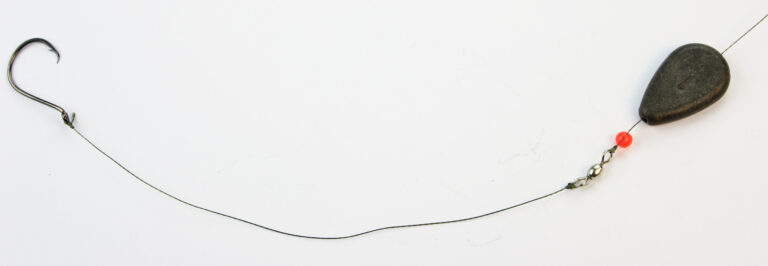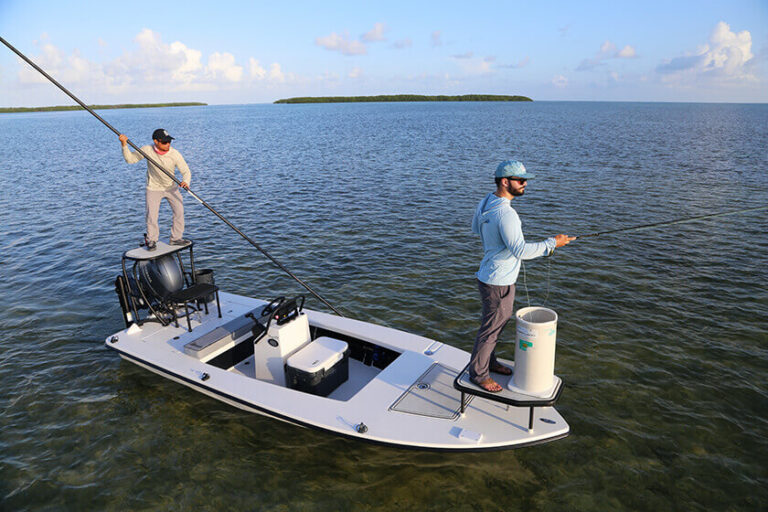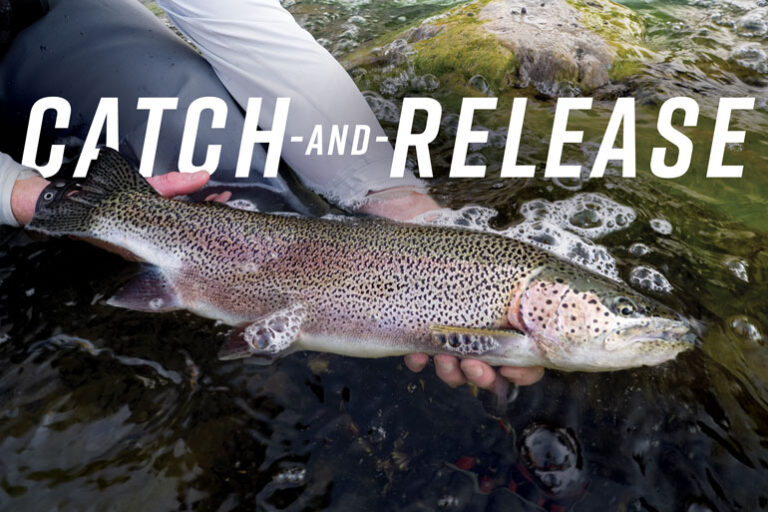To choose the right fishing line for flats fishing, consider the fishing conditions and target species. In flats fishing, a fluorocarbon line with a weight suitable for the targeted fish species is recommended.
It is invisible underwater and provides excellent strength and sensitivity for detecting bites. Additionally, choose a line with the appropriate pound-test rating to match the size of the fish you are targeting. A braided line can also be a good option, offering high strength and fine diameter for increased casting distance.
Overall, understanding the fishing conditions and matching the line’s properties to the specific requirements of flats fishing will help you make the right choice and improve your chances of success on the water.

Credit: flyfishusa.com
Understanding The Basics: Fishing Line Types And Their Characteristics
Fishing in the flats can be an exciting and rewarding experience, but it’s essential to have the right fishing line to ensure success. The type of line you choose can make a significant difference in your fishing results. In this section, we’ll dive into the basics of fishing line types and their characteristics, helping you make an informed decision.
Let’s explore the pros and cons of three popular fishing line options: monofilament, braided, and fluorocarbon.
Monofilament Fishing Lines: Pros And Cons
- Versatile and widely available.
- Easy to handle and knot due to its flexibility.
- Good shock resistance and elasticity, making it suitable for handling aggressive fish.
- Cost-effective option, making it popular among beginner anglers.
- Visible in the water, which can be an advantage when detecting subtle bites.
- Can deteriorate over time when exposed to uv rays, requiring regular replacement.
- Can have high memory, causing line twist and tangles.
Braided Fishing Lines: Pros And Cons
- Exceptionally strong and resistant to abrasion.
- Thin diameter compared to its strength, allowing for increased line capacity on reels.
- Zero stretch, providing excellent sensitivity and hook-setting power.
- Longevity; these lines have a longer lifespan compared to other options.
- Highly visible, which can be a disadvantage in clear water or in areas where fish are line shy.
- Can be challenging to handle due to its lack of flexibility, making it prone to tangling.
- More expensive than monofilament lines.
Fluorocarbon Fishing Lines: Pros And Cons
- Nearly invisible underwater, making it ideal for fishing in clear waters.
- Sinks quickly, allowing lures and baits to attain the desired depth swiftly.
- Offers excellent abrasion resistance, suitable for fishing around structures.
- Low visibility can make subtle bites harder to detect.
- More rigid than monofilament, making it less forgiving when fighting aggressive fish.
- Relatively expensive compared to other options.
When choosing the right fishing line for flats fishing, consider your fishing style, target species, and the conditions you’ll be facing. Each type of line has distinct pros and cons, making it crucial to assess your specific requirements before making a decision.
By understanding the basics of fishing line types and their characteristics, you can make an informed choice and increase your chances of success on the flats. Happy fishing!
Determining The Right Fishing Line For Your Flats Fishing Needs
When it comes to flats fishing, choosing the right fishing line is essential for a successful and enjoyable experience. The fishing line you use can greatly impact your chances of hooking that trophy fish and ensuring that it doesn’t break loose.
To make an informed decision about the best fishing line for your flats fishing needs, consider the following factors:
Assessing The Fishing Conditions: Water Clarity, Depth, And Target Species
Before selecting a fishing line for flats fishing, it is essential to assess the fishing conditions you will be encountering. Here are the key points to consider:
- Water clarity: The clarity of the water plays a significant role in choosing the right fishing line. In clear water, fish are more likely to be wary of visible lines, so a low-visibility line, such as fluorocarbon, is recommended. In murkier water, a monofilament line can be more suitable since visibility is less of a concern.
- Depth: The depth at which you’ll be fishing also influences your line choice. Fishing in shallow flats requires lighter lines that can maintain sensitivity and allow for precise casting. Deeper flats may necessitate heavier lines to handle the pressure and ensure that the line doesn’t break.
- Target species: Different species of fish may require specific fishing lines. For example, if you’re targeting bonefish, a stronger and more abrasion-resistant line would be necessary to handle their powerful runs. Researching the characteristics and behavior of your target species will help you determine the appropriate line strength and qualities.
Evaluating The Casting Distance And Sensitivity Requirements
The casting distance and sensitivity needed when flats fishing can significantly impact your line choice. Consider the following:
- Casting distance: Flats fishing often requires precise casting to reach fish that are feeding or cruising in shallow water. Selecting a line with low memory and high castability will help you achieve longer and more accurate casts.
- Sensitivity: Being able to feel even the slightest nibble or bite is crucial in flats fishing. A line that provides excellent sensitivity will ensure you can detect these subtle movements, increasing your chances of hooking fish. Fluorocarbon lines are known for their superior sensitivity compared to monofilament.
Considering The Line Strength And Abrasion Resistance
The strength and abrasion resistance of the fishing line play critical roles in flats fishing. Here’s what you need to consider:
- Line strength: Choosing the right line strength is crucial to handle the fish you may encounter in the flats. Opt for a line with sufficient strength that can withstand the fighting power of your target species. However, keep in mind that using a heavier line than necessary may reduce sensitivity and impact your overall fishing experience.
- Abrasion resistance: Flats fishing often involves fishing near sandy or rugged terrains where lines can come into contact with structures that cause wear and tear. Therefore, it is important to select a line with high abrasion resistance to prevent breakages and ensure you can land your catch successfully.
By assessing the fishing conditions, evaluating casting distance and sensitivity requirements, and considering the line strength and abrasion resistance, you can confidently choose the right fishing line for your flats fishing needs. Remember to prioritize the specific requirements of your target species and the water conditions you’ll be fishing in for the most successful and rewarding fishing experience.
Practical Tips For Selecting The Perfect Fishing Line
Fishing lines play a crucial role in flats fishing, where stealth and precision are essential. The right fishing line can make a world of difference in your success on the flats. Here are some practical tips to help you choose the perfect fishing line for your flats fishing adventures.
Testing Different Line Diameters: Balancing Strength And Stealth
- Consider the target species and fishing conditions:
- For smaller species and calm conditions, a thinner diameter line is recommended.
- If you’re targeting larger fish or fishing in areas with structure or heavy cover, opt for a thicker line for added strength.
- Assess the line’s strength-to-diameter ratio:
- Look for a line that offers a high tensile strength while maintaining a thin diameter.
- Thinner lines provide better sensitivity, improved casting distance, and easier management in windy conditions.
- Perform line testing:
- Experiment with different line diameters to find the right balance between strength and stealth.
- Test the lines by putting them under pressure, checking for durability and resilience.
Experimenting With Different Line Colors: Visibility And Camouflage
- Evaluate water conditions and species behavior:
- Clear waters may require a more transparent or nearly invisible line to avoid spooking fish.
- Murkier or stained waters may benefit from a colored line to enhance visibility.
- Consider the visibility factor:
- Opt for a line color that contrasts with the water you’ll be fishing in. This will help you detect subtle strikes or line movement.
- Green and blue lines are popular choices for fishing in a variety of water conditions.
- Strike a balance between visibility and camouflage:
- Test different line colors to see what works best for you and the fishing conditions you often encounter.
Exploring Various Line Brands: Quality And Reliability
- Research trusted brands:
- Look for reputable fishing line manufacturers with a proven track record in producing high-quality fishing lines.
- Read reviews and user experiences to gauge the reliability and performance of different brands.
- Seek recommendations from experienced anglers:
- Consult with fellow anglers or fishing forums to get insights on which brands are favored for flats fishing.
- Consider the feedback and experiences of others in your decision-making process.
- Experiment with different brands and line types:
- Explore monofilament, fluorocarbon, and braided lines from different brands to find the one that suits your fishing style and preferences.
Remember, the perfect fishing line for flats fishing will depend on various factors such as target species, fishing conditions, and personal preferences. Don’t be afraid to try different lines, perform experiments, and gather feedback from other anglers to find the ideal line for your flats fishing endeavors.
Conclusion
Choosing the right fishing line for flats fishing is crucial for a successful and enjoyable angling experience. By considering factors such as line strength, visibility, stretch, and abrasion resistance, you can make an informed decision that suits your fishing needs.
Whether you opt for a monofilament line for its versatility, fluorocarbon line for its invisibility, or braided line for its strength and sensitivity, each option brings its own advantages and disadvantages. Remember to match your line to the type of fish you are targeting and the fishing conditions you expect to encounter.
Regularly inspect and maintain your fishing line to ensure optimal performance and prolong its lifespan. With the right fishing line in your arsenal, you can increase your chances of hooking those elusive flats fishing species and enjoy a successful day on the water.
Happy fishing!




